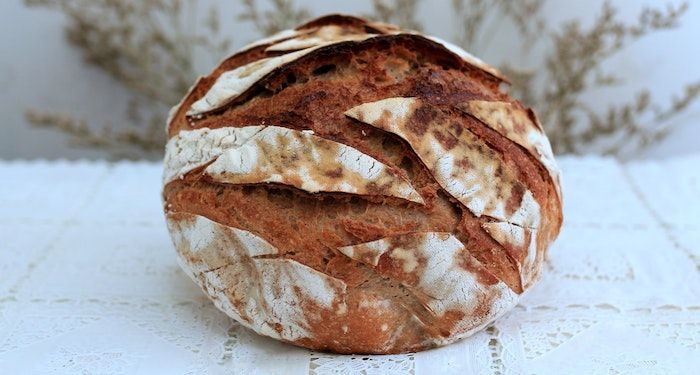Whether you’re looking to try your hand at sourdough for the first time or have been folding dough and scoring loaves for decades, there’s always something new to learn about the beloved classic bread. In this cookbook showdown, I’ll compare classic artisan sourdough recipes from four popular sourdough cookbooks, including pictures and ratings of the recipes I tested.
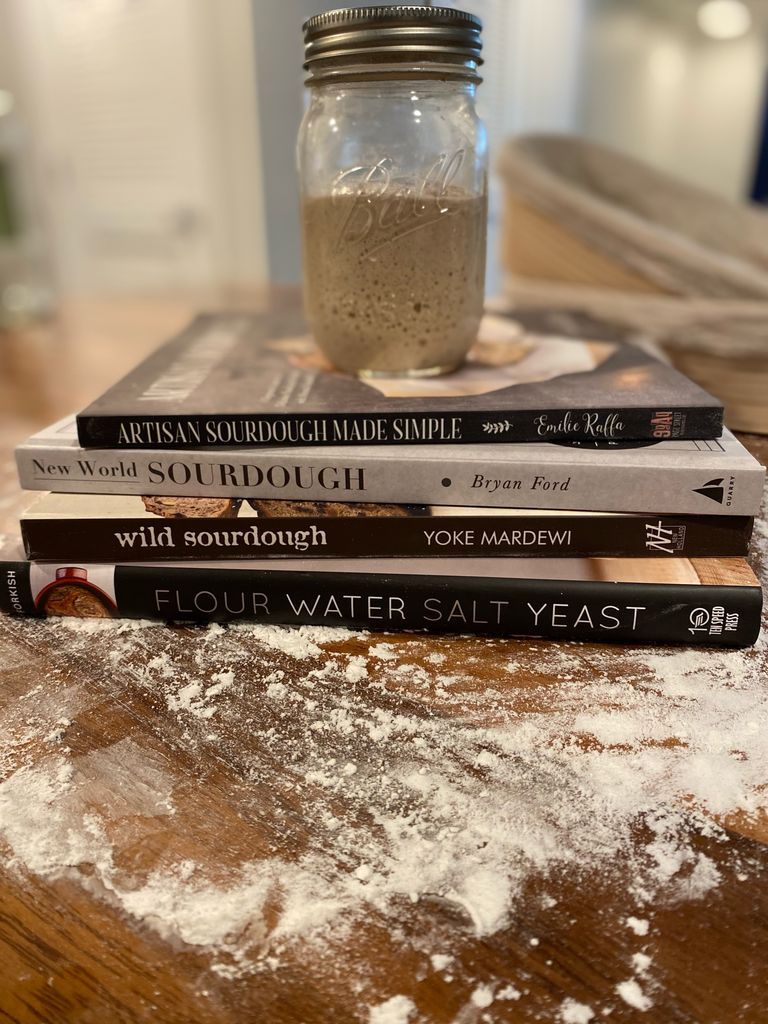
“Sourdough” was one of the biggest buzzwords of early COVID-19 quarantine, up there with anxiety-relieving distractions like puzzles, virtual happy hours, and Tiger King. As a home baker with a lot of stress and nowhere to go, I quickly jumped onboard last March, creating my own starter from scratch and diving into the world of naturally yeasted breads. I watched countless YouTube videos, perused old cookbooks, and googled things like “why does my sourdough starter smell like beer” for months as I tried to master the ancient art. And while I still wouldn’t call myself a master of sourdough, I can make a pretty tasty loaf.
I had no idea what I was getting myself into that day when I first mixed together my starter. Making sourdough veers decidedly closer to “sciencey stuff” than I realized. Attempting to grow your skills requires knowledge of things like lactobacilli, pH balances, and Louis Pasteur’s germ theory. The different (and often conflicting) theories, methods, and troubleshooting tips are certainly enough to make any amateur baker’s head spin. But at the same time, there’s something mystical about sourdough, something that makes me feel connected to human history and the natural yeast, seemingly with a mind of its own. If you’ve ever read Robin Sloane’s fantastical novel Sourdough, perhaps you feel the same.
Sourdough dates back further than our earliest recorded history; we didn’t start using today’s ubiquitous baker’s yeast for breads until about 150 years ago. Michael Gaenzle explores the history of sourdough in Encyclopedia of Food Microbiology: “One of the oldest sourdough breads dates from 3700 BCE and was excavated in Switzerland, but the origin of sourdough fermentation likely relates to the origin of agriculture in the Fertile Crescent several thousand years earlier.” When digging my hands into the sticky, fragrant dough, it’s easy to feel like I’m activating some kind of ancient magic. And when you get into theories of how microbiomes in the stomach affect everything from our digestive health and immune system to our cognitive function and behavior, the yeast that makes our bread sounds a lot more powerful.
As my experience and knowledge of sourdough grew, I decided it was the perfect time to test out some of the most popular recipes and methods from recent cookbooks. Most cookbooks focused on the art of sourdough start with general techniques and a basic sourdough recipe, and then go into variations on the classic loaf and other recipes you can make with your starter. I chose four popular sourdough cookbooks and tested their basic sourdough recipe, using my own starter and tools on hand. For each, I’ve given a little description of the cookbook overall, along with ratings of the appearance, texture, and flavor of the classic loaves and difficulty level of the recipe.
Ingredients & Tools Used
In testing these sourdough recipes, I used the same ingredients and special tools I typically use while making sourdough for consistency. I don’t have a proving box, so I used my closed oven with the light on to create a warm, dry atmosphere when called for in the recipes. Here’s what else I used:
- Janie’s Mill all-purpose and artisan bread flour (I started ordering flour from Janie’s Mill because of a shortage in my area last spring. Now I can’t quit it and I’ve used over 100 pounds of Janie’s Mill flour in the past year!)
- King Arthur whole wheat flour
- DOYOLLA banneton proofing baskets
- Kookyn bread scoring lame
- Pampered Chef Rockcrok dutch oven
The Results
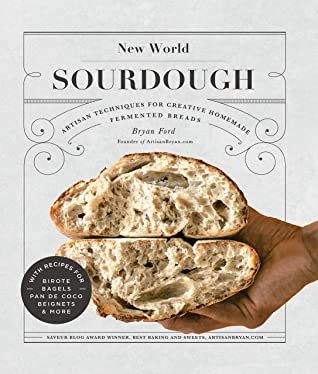
New World Sourdough: Artisan Techniques for Creative Homemade Fermented Breads by Bryan Ford
Published in 2020, this “new world” sourdough cookbook is indeed a fresh and exciting look at an age old technique. While sourdough is frequently associated with European cuisine, natural yeasts have been used to make breads across continents and cultures throughout human history. Ford’s cookbook teaches the basics of sourdough and keeping a sourdough starter alive, but it also explores ways to use your starter for a variety of international recipes like Honduran pan de coco, Italian ciabatta, Jamaican hard dough, Brazilian pão de queijo, New Orleans beignets, and Mexican birote. After a year of baking sourdough, seeing so many different flavors and techniques to make with my starter is thrilling, and I can’t wait to give more of these recipes a try. (I did try an olive oil and sea salt loaf recipe from this book, which is one of the less challenging variations. It was fantastic!) Let’s take a look at how Bryan Ford’s classic “Pan Rustico” sourdough turned out.
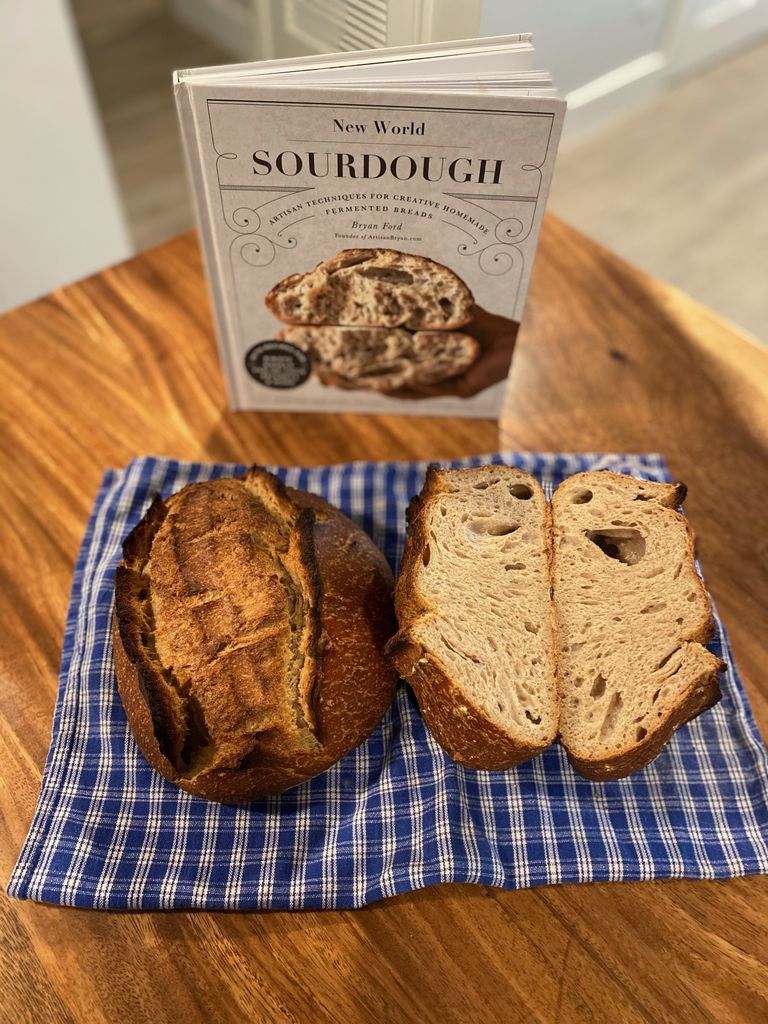
Appearance: 4/5. Ford likes his sourdough baked a little darker than I prefer, and this didn’t get quite the oven spring I would hope, but otherwise looks nice.
Texture: 4/5. Some large holes, moist but not gummy, slightly dense.
Flavor: 5/5. Good mix of all-purpose, bread, and whole wheat flours. Made for a great sandwich!
Difficulty: 3/5. This didn’t require as much active time as some recipes, but his “squeezing” method of mixing and the loaf shaping technique were a little tricky.
Overall: 4/5. Much of this recipe was quite different from my preferred methods, but I was happy with the final product.
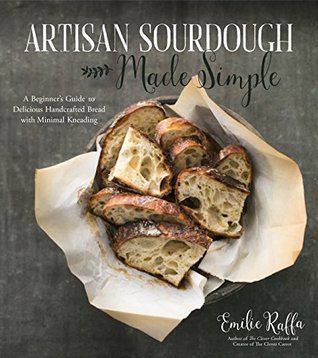
Artisan Sourdough Made Simple: A Beginner’s Guide to Delicious Handcrafted Bread with Minimal Kneading by Emilie Raffa
Emilie Raffa started her food blog The Clever Carrot in 2012. But after starting her journey with sourdough, The Clever Carrot slowly morphed into a sourdough-focused blog, and eventually led her to publish this cookbook in 2017. Raffa focuses this book on sourdough beginners, demystifying the magic of sourdough and helping home bakers learn all of the things they can do with sourdough starter. The cookbook features a variety of bread recipes for traditional sourdough and other styles made from the same starter, like roasted garlic knots and tomato basil focaccia. Further, Raffa includes recipes to make with sourdough starter discard, like cinnamon sugar waffles and gruyere crackers, as well as dishes to make with or accompany sourdough, like croutons, spicy white bean dip, and small-batch jams. Looking through this cookbook definitely inspired me to try new flavors with my sourdough starter. For this showdown, I made Raffa’s “Everyday Sourdough” recipe.
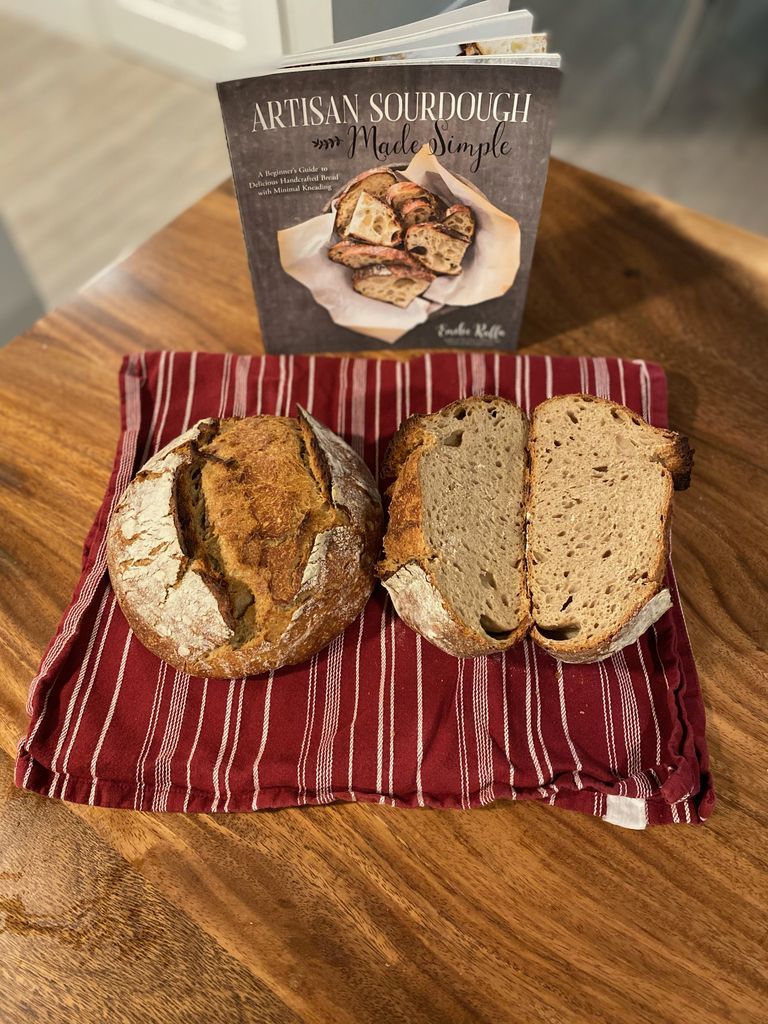
Appearance: 4/5. Nice oven spring, and the added flour before baking gives it a nice rustic look. The ear (the flap created by scoring) got a little burned from the long baking time, but still a lovely loaf.
Texture: 3/5. This was definitely denser than I like, although it wasn’t too gummy. Easy to slice and holds together well for a sandwich.
Flavor: 4/5. Tasted very nice (and the smell in the oven was A+).
Difficulty: 2/5. Let’s be real. All sourdough is challenging, but this recipe was great for beginners. It avoids specialty tools and even lays out a timeline for baking!
Overall: 3/5. This is a great recipe for beginners, but is a little too simple to turn out an excellent loaf of sourdough. (She does have an advanced recipe I will try next!)
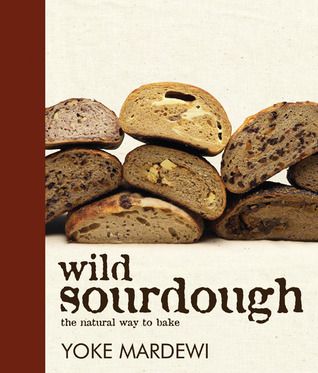
Wild Sourdough: The Natural Way to Bake by Yoke Mardewi
Baker Yoke Mardewi is known for teaching sourdough classes in Australia, along with lessons on other fermented foods like yogurt, sauerkraut, and kimchi. Unfortunately, her teachings don’t come across as clearly in her cookbook Wild Sourdough, published in 2019. Of the cookbooks I reviewed, this one had the fewest and the worst quality pictures. In fact, there are no pictures to help readers understand the techniques and process; only finished loaves. Additionally, Mardewi’s techniques are minimally described, and I couldn’t even find videos online to better understand her methods. The book does, however, feature a wide variety of flavors and mix-ins. Sourdough recipes include everything from halloumi mint to fig walnut to feta chilli. While this cookbook would certainly prove challenging for beginners, Mardewi does provide the tools to better understand the science of sourdough, the properties of various grains, and how to improvise. This cookbook might be a good fit for experienced sourdough bakers who want to learn to create their own recipes. For this cookbook showdown, I made Yoke Mardewi’s “Pain au Levain”.
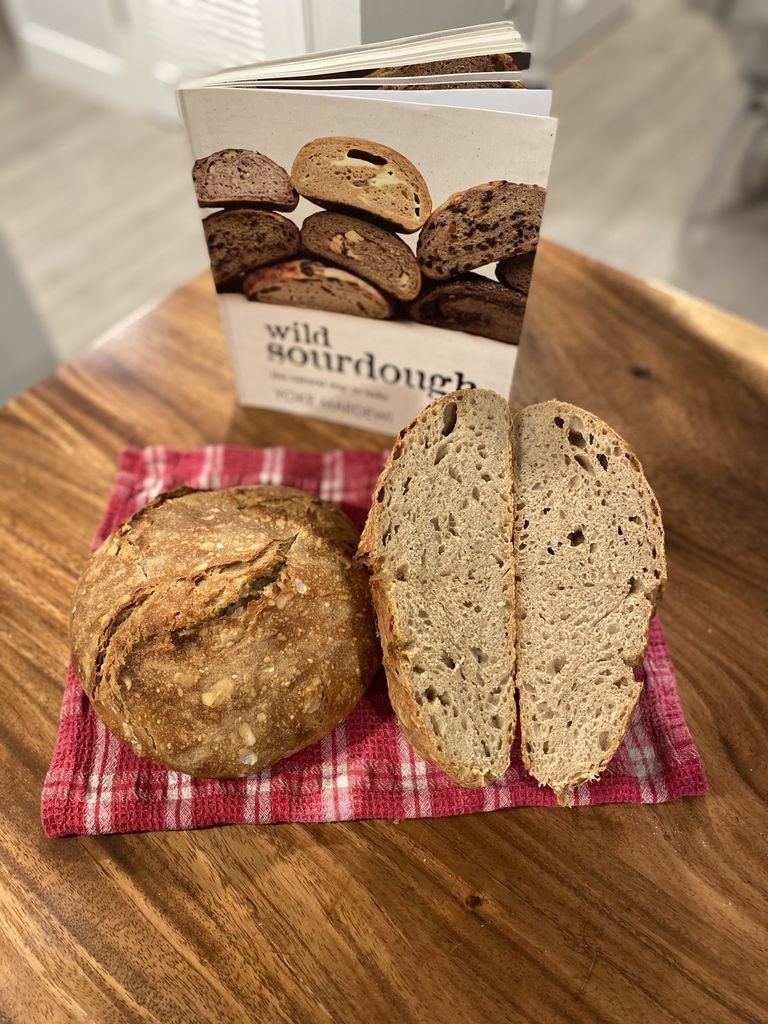
Appearance: 1/5. This is one flat loaf. I think this came from several problems: resting on the countertop instead of in a proving basket, not scoring the top of the loaf, and the overall lack of shaping technique.
Texture: 5/5. As much as I hate the look of this bread, it was delightfully soft, with a thin, crispy crust. I think the water bath made a big difference.
Flavor: 4/5. Tasted (and smelled) great, but not enough salt.
Difficulty: 4/5. While the recipe isn’t that difficult, the lack of explanation and images makes it challenging to follow.
Overall: 3/5. I was frustrated with the lack of detail in the recipe, but this turned out to be a very light, tasty bread.
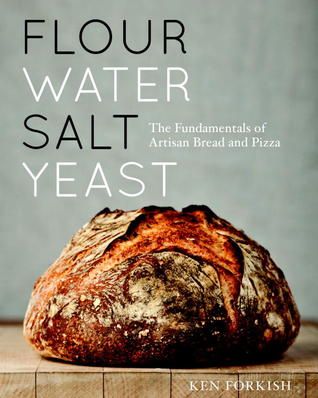
Flour Water Salt Yeast: The Fundamentals of Artisan Bread and Pizza by Ken Forkish
This 2012 cookbook comes from Ken Forkish, owner of Ken’s Artisan Bakery in Portland. Forkish spent years learning the secrets to the most popular European artisan breads. Then, he spent years translating those bakery recipes to something amateur bakers could make in their home kitchens. This is the only book I reviewed that includes a majority of recipes that use store-bought instant yeast. However, all of those recipes serve as lessons to work your way up to artisan sourdough made entirely with natural yeast. The cookbook spends a lot of time explaining the science of bread and how slight differences in temperature and water to flour ratios can make all the difference. He also talks extensively about pizza, including different crusts, toppings, and methods. This book probably has the least diversity in recipes and flavors; it also teaches the most about technique. For this test, I made Forkish’s “Overnight Country Blonde” recipe, about which I will respectfully not make a one-night-stand joke.
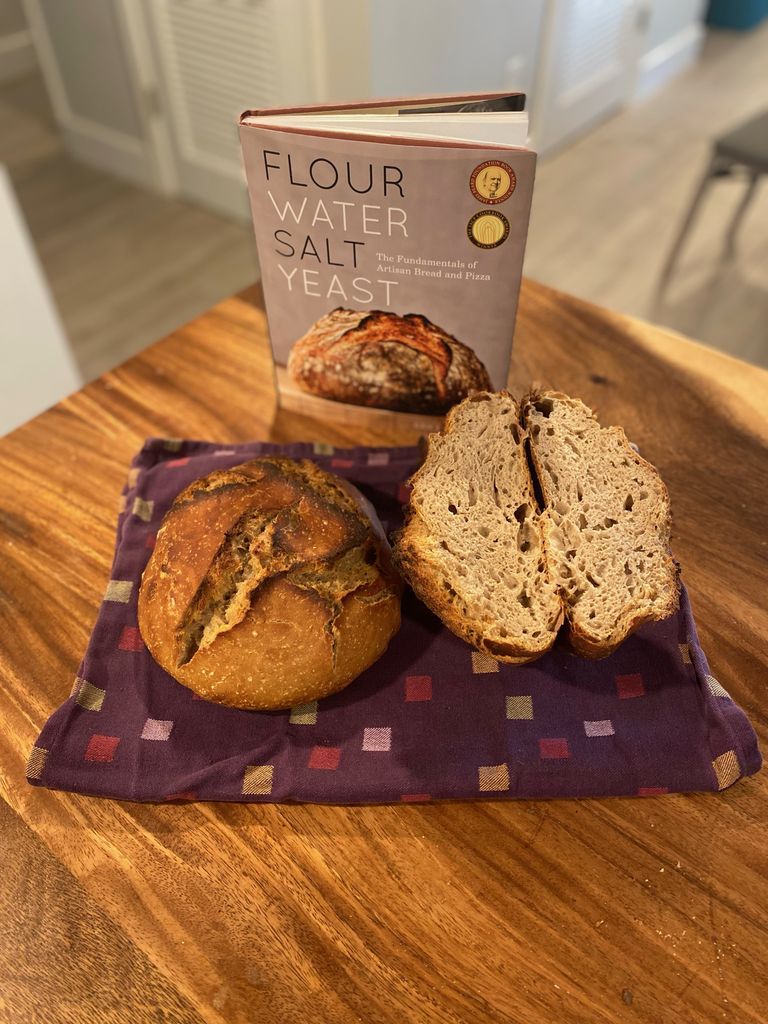
Appearance: 2/5. Forkish bakes the loaf seam-side up and doesn’t score, allowing the bread to naturally crack at the seams. This loaf rose pretty nicely, but I think a proper score would have made all the difference. It also doesn’t have the bubbly surface I expect on sourdough.
Texture: 4/5. Nice, light interior, but the outside is SO crispy that it turns to crumbs the minute I slice it.
Flavor: 5/5. Thanks to a very long bulk rise, this bread has a wonderfully complex, sweet flavor.
Difficulty: 5/5. Not only does Forkish ask you to read about 100 pages of technique and history before trying a recipe, it’s also a very moist dough, making it sticky to work with.
Overall: 4/5. Besides the appearance, this is a fantastic loaf. I found it well worth the difficulty of making it.
Final Thoughts
The hardest part of this experiment was putting aside all of the lessons I’ve learned on my own sourdough journey. I tried to leave everything I knew out of it, instead doing only as the cookbook instructed. While I’ll probably keep fine-tuning my own recipe instead of jumping ship to one of these books, I learned a lot from this process.
If you’re starting your own sourdough journey, I highly recommend starting with YouTube videos. You can learn a lot from still images in cookbooks, but so much of understanding sourdough comes from the way the dough moves and feels.
There’s a lot of crossover in the information provided in these four cookbooks, but it’s surprising how differently each baker instructs you to make bread. My biggest takeaway from this project is that one book is never enough. (But didn’t I already know that? My TBR certainly does.)
Final Rankings
Best Overall: New World Sourdough by Bryan Ford
Best for Beginners: Artisan Sourdough Made Simple by Emilie Raffa
Best for Advanced Bakers: Wild Sourdough by Yoke Mardewi
Best for Science Lovers: Flour Water Salt Yeast by Ken Forkish
